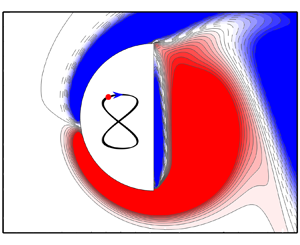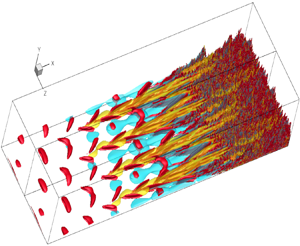Refine listing
Actions for selected content:
1418807 results in Open Access
Resetting Archaeological Interpretations of Precontact Indigenous Agriculture: Maize Isotopic Evidence from Three Ancestral Mohawk Iroquoian Villages
-
- Journal:
- American Antiquity / Volume 88 / Issue 4 / October 2023
- Published online by Cambridge University Press:
- 14 September 2023, pp. 497-512
- Print publication:
- October 2023
-
- Article
-
- You have access
- Open access
- HTML
- Export citation
Bruce N. Kaye, Frozen Institutions: Questions for the Church after Christendom (Eugene, OR: Wipf & Stock - Pickwick Publications, 2022), pp. xx + 207. ISBN 978-1666713480
-
- Journal:
- Journal of Anglican Studies / Volume 22 / Issue 2 / November 2024
- Published online by Cambridge University Press:
- 14 September 2023, pp. 609-611
-
- Article
- Export citation
Periodic solutions of four-order degenerate differential equations with finite delay in vector-valued function spaces
- Part of
-
- Journal:
- Proceedings of the Royal Society of Edinburgh. Section A: Mathematics / Volume 155 / Issue 2 / April 2025
- Published online by Cambridge University Press:
- 14 September 2023, pp. 395-412
- Print publication:
- April 2025
-
- Article
- Export citation
A way with words: Nawab Siddiq Hasan Khan (1832–1890) and the unexpected power of print
-
- Journal:
- Journal of the Royal Asiatic Society / Volume 33 / Issue 4 / October 2023
- Published online by Cambridge University Press:
- 14 September 2023, pp. 949-969
- Print publication:
- October 2023
-
- Article
-
- You have access
- Open access
- HTML
- Export citation
Chris E.W. Green, All Things Beautiful: An Aesthetic Christology (Waco, TX: Baylor University Press, 2021), pp. 211. ISBN 978-1481315586
-
- Journal:
- Journal of Anglican Studies / Volume 22 / Issue 2 / November 2024
- Published online by Cambridge University Press:
- 14 September 2023, pp. 607-609
-
- Article
- Export citation
Feasibility of and Experience With Free State-Funded Telehealth-Based Patient Self-referral for COVID-19 Monoclonal Antibody Therapy
-
- Journal:
- Disaster Medicine and Public Health Preparedness / Volume 18 / 2024
- Published online by Cambridge University Press:
- 13 September 2023, e110
-
- Article
-
- You have access
- Open access
- HTML
- Export citation
Factors associated with low birthweight among late preterm singletons in Japan using pregnancy birth registry data
-
- Journal:
- Journal of Developmental Origins of Health and Disease / Volume 14 / Issue 5 / October 2023
- Published online by Cambridge University Press:
- 13 September 2023, pp. 584-590
-
- Article
- Export citation
Two-degree-of-freedom flow-induced vibrations of a D-section prism
-
- Journal:
- Journal of Fluid Mechanics / Volume 971 / 25 September 2023
- Published online by Cambridge University Press:
- 13 September 2023, A5
-
- Article
-
- You have access
- Open access
- HTML
- Export citation
Validating the biosocial model of borderline personality disorder: Findings from a longitudinal study
-
- Journal:
- Development and Psychopathology / Volume 36 / Issue 4 / October 2024
- Published online by Cambridge University Press:
- 13 September 2023, pp. 1752-1762
-
- Article
-
- You have access
- Open access
- HTML
- Export citation
Clinician experiences on training and awareness of sexual orientation in NHS Talking Therapies Services for Anxiety and Depression
-
- Journal:
- The Cognitive Behaviour Therapist / Volume 16 / 2023
- Published online by Cambridge University Press:
- 13 September 2023, e24
-
- Article
-
- You have access
- Open access
- HTML
- Export citation
Response of wheat cultivars to zinc application for seed yield and quality improvement
-
- Journal:
- The Journal of Agricultural Science / Volume 161 / Issue 4 / August 2023
- Published online by Cambridge University Press:
- 13 September 2023, pp. 549-562
-
- Article
-
- You have access
- Open access
- HTML
- Export citation
Multi-resolution habitat models of the Puerto Rican Nightjar Antrostromus noctitherus
-
- Journal:
- Bird Conservation International / Volume 33 / 2023
- Published online by Cambridge University Press:
- 13 September 2023, e74
-
- Article
-
- You have access
- Open access
- HTML
- Export citation
Salt: White Gold in Early Europe. Anthony Harding. 2021. Cambridge University Press, Cambridge. v + 93 pp. $20.00 (paperback), ISBN 978-1-009-01764-0. $16.00 (e-book), ISBN 978-1-009-03759-4.
-
- Journal:
- American Antiquity / Volume 88 / Issue 4 / October 2023
- Published online by Cambridge University Press:
- 13 September 2023, pp. 608-609
- Print publication:
- October 2023
-
- Article
- Export citation
Dietary palm oil enhances Sterol regulatory element-binding protein 2-mediated cholesterol biosynthesis through inducing endoplasmic reticulum stress in muscle of large yellow croaker (Larimichthys crocea)
-
- Journal:
- British Journal of Nutrition / Volume 131 / Issue 4 / 28 February 2024
- Published online by Cambridge University Press:
- 13 September 2023, pp. 553-566
- Print publication:
- 28 February 2024
-
- Article
-
- You have access
- HTML
- Export citation
Impact of the sequential implementation of a pharmacy-driven methicillin-resistant Staphylococcus aureus (MRSA) nasal-swab ordering policy and vancomycin 72-hour restriction protocol on standardized antibiotic administration ratio (SAAR) data for antibiotics used for resistant gram-positive infections
-
- Journal:
- Infection Control & Hospital Epidemiology / Volume 45 / Issue 2 / February 2024
- Published online by Cambridge University Press:
- 13 September 2023, pp. 196-200
- Print publication:
- February 2024
-
- Article
-
- You have access
- Open access
- HTML
- Export citation
Regulation of long-term care for older persons: a scoping review of empirical research
-
- Journal:
- International Psychogeriatrics / Volume 36 / Issue 4 / April 2024
- Published online by Cambridge University Press:
- 13 September 2023, pp. 289-305
-
- Article
-
- You have access
- Open access
- HTML
- Export citation
Active surveillance of carbapenemase-producing Enterobacterales using genomic sequencing for hospital-based infection control interventions
-
- Journal:
- Infection Control & Hospital Epidemiology / Volume 45 / Issue 2 / February 2024
- Published online by Cambridge University Press:
- 13 September 2023, pp. 137-143
- Print publication:
- February 2024
-
- Article
-
- You have access
- Open access
- HTML
- Export citation
Cognitive therapy for PTSD following birth trauma and baby loss: clinical considerations
-
- Journal:
- The Cognitive Behaviour Therapist / Volume 16 / 2023
- Published online by Cambridge University Press:
- 13 September 2023, e23
-
- Article
-
- You have access
- Open access
- HTML
- Export citation
High-subsonic boundary-layer flows of an organic vapour
-
- Journal:
- Journal of Fluid Mechanics / Volume 971 / 25 September 2023
- Published online by Cambridge University Press:
- 13 September 2023, A8
-
- Article
-
- You have access
- Open access
- HTML
- Export citation
The influence of hospital leadership support on burnout, psychological safety, and safety climate for US infection preventionists during the coronavirus disease 2019 (COVID-19) pandemic
-
- Journal:
- Infection Control & Hospital Epidemiology / Volume 45 / Issue 3 / March 2024
- Published online by Cambridge University Press:
- 13 September 2023, pp. 310-315
- Print publication:
- March 2024
-
- Article
-
- You have access
- Open access
- HTML
- Export citation












































